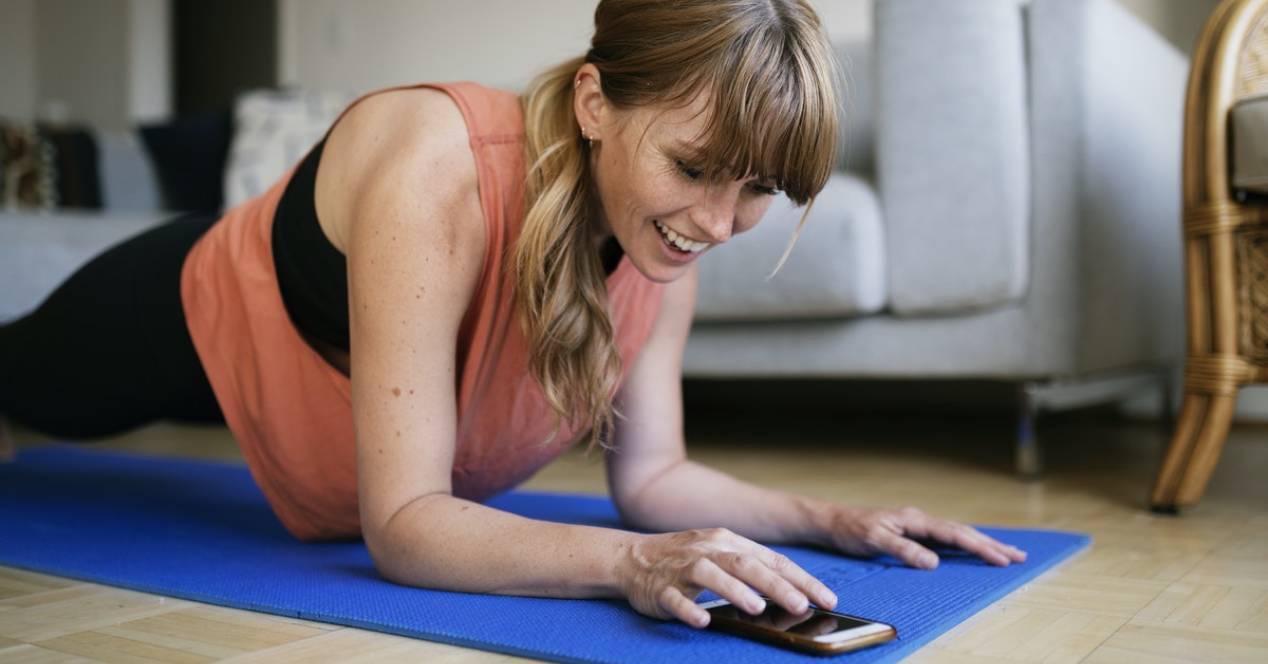
Do you have pain in your neck (and not your abs) after a basic workout? Neck strain during ab-focused exercises is so common you might think it's just a reality. But we're here to tell you that you don't have to struggle with nagging neck pain every time you do bicycle crunches.
Conversely, neck discomfort is a sign that something is not right and needs adjustment. Today we explain what can be causing those annoying pains during your abdomen workouts, as well as offer you adjustments for the main movements, so they are more effective and stop being a pain in the neck.
Your neck is compensating for your abs
When we reach our final range of motion in a joint, a nearby one makes up for it by working overtime. Although this is true throughout the body, it is especially common during abdominal exercises.
When people reach their final range of spinal flexion, either because that's how far their spine is bent or because the rectus abdominis is fatigued, we often use the muscles at the front of the spine to help move. a little more.
In other words, our neck compensates for our abs and tries to lift our head off the ground.
Avoid it with the posture of your chin
Keeping the chin tucked results in less activation of the sternocleidomastoid muscle, which runs along the front and sides of the neck. A short chin position shortens the lever acting on the head to reduce the force the neck muscles have to work to keep you in neutral alignment.
If that's hard to imagine, think about grabbing a lollipop at the base of the stick. Holding it just below the candy makes it feel lighter, right? It's the same concept in working with the neck muscles.
Tucking your chin in will not only decrease neck pain, it will also lead to greater rectus abdominis and external oblique activation, increasing the effectiveness of your exercise.
Has poor technique and form
It is normal that you can mark the neck incorrectly. During crunches and squats, many people simply lift their bodies up, leading with the front of their cervical spine, so the neck, as opposed to your core, leads the parade.
That may be old news for you. But poor posture, the resulting neck pain, comes from abdominal movements you might not expect. Like the plates. Many people crane their necks to look around the room or drop their heads; either scenario will make the neck muscles work.
watch where you put your hands
For crunches, it's best to cradle your head in your hands (place your fingertips behind your ears, not on your neck). The trick is to support the weight of your head without pulling with your hands. To do that, keep a light touch and focus on pulling through your core.
With planks, the goal is to maintain the cervical spine as a neutral continuation of the rest of the spine. Just like your head sits in line with your torso and legs when standing, it should sit in line with the rest of your body when on a plank.
Gravity is pulling on your neck
When standing, gravity keeps the head stacked on top of the neck. Conversely, in positions like a Russian twist, V-crunch, plank, or side plank, gravity does the opposite. In fact, you are working to force your head out of neutral alignment.
And when it comes to the pull of gravity, it doesn't help that our heads are heavy. A normal head can weigh between 4 and 5 kilos, and often when performing core flexion exercises, athletes feel all the weight, and then some.
When your head is not on your neck in perfect alignment, it puts a great deal of extra weight and pressure on your spine. Something similar happens when we bend our neck while using our mobile phones. Believe it or not, this poor posture and head position significantly increases the load on your spine.
For example, when you bend your head at a 60 degree angle, you place approximately 27 pounds of stress on the cervical spine. That's why neutral neck alignment during abdominal exercises is important to minimize pain and discomfort and reduce stress on the spine.
Avoid bending exercises
If you have ongoing neck issues, I would recommend eliminating core flexion exercises in favor of standing and supine exercises. Since your neck doesn't need to fight gravity in these positions, you don't have to work overtime and put undue stress on those muscles.
Any standing or supine exercises, such as medicine ball slams, dead bug, or bird-dog, require little to no strain on the neck.